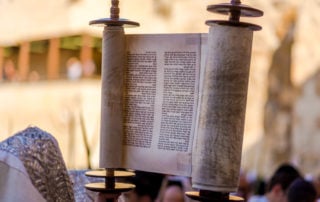613 Degrees of Freedom
Passover has ended. All Jews hastily return their Passover dishes to storage in special cabinets or the attic until the next Passover. After an eight-day break, home becomes filled with the aroma of freshly baked bread. Passover leaves us with the pleasant taste of burnt matzot, memories of the Seder spent with family, and stories of the Exodus. But did Passover really end? In the Mishnah (the precursor to Talmud), the holiday of Shavuot (Pentecost) is called Atzeret. This word is familiar to us from Shemini Atzeret—the holiday that follows immediately after the seven days of Sukkot, often simply viewed as the last day (or, in the diaspora, the last two days) of Sukkot. Either way, Shemini Atzeret is the conclusion of the festival of Sukkot. By designating Shavuot as Atzeret, the Mishnah seems [...]




